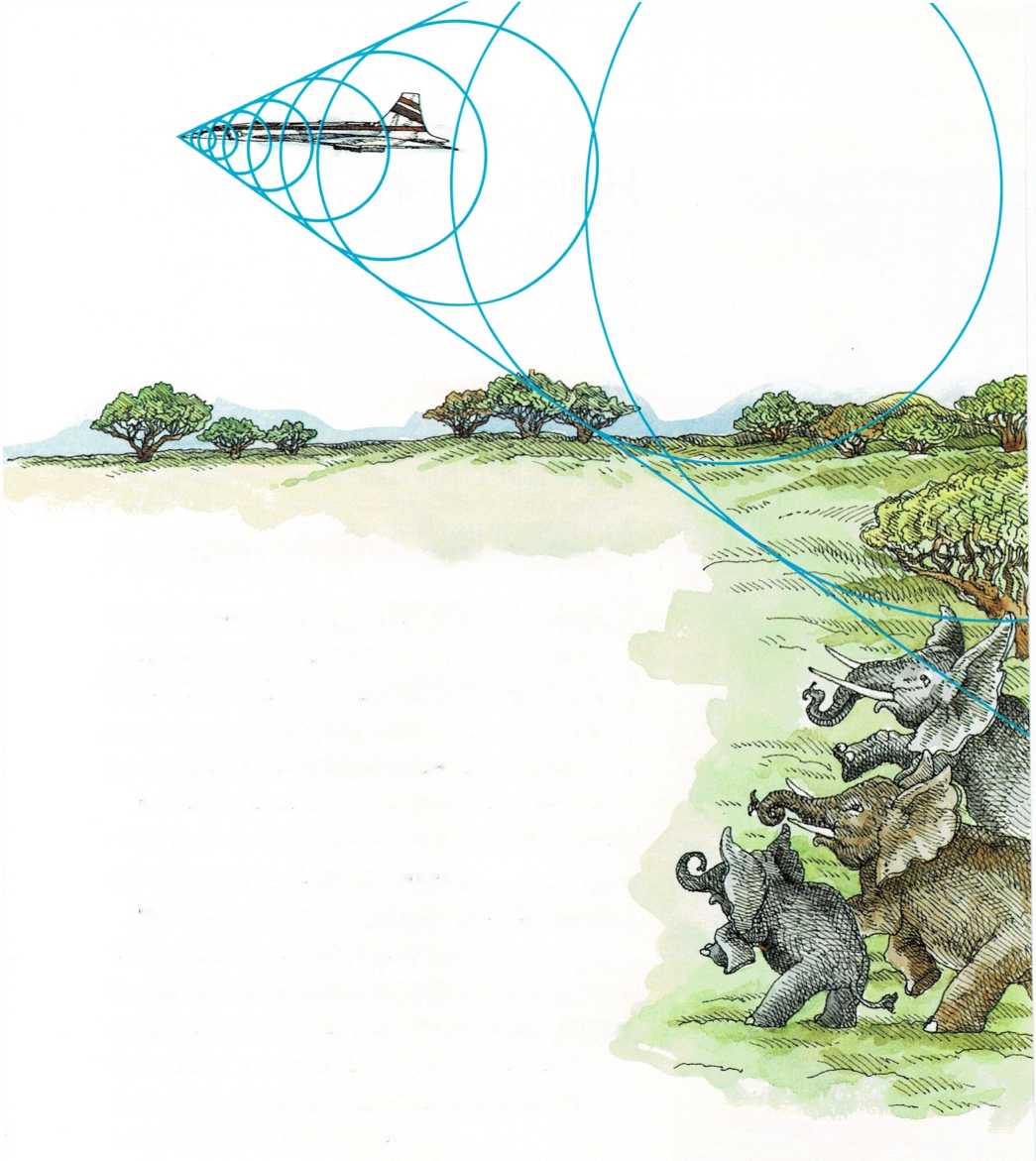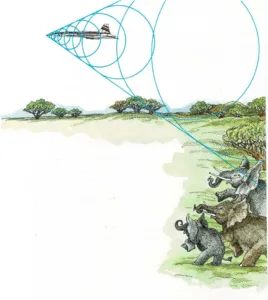Sounds from moving things
Have you ever noticed a change in the \”whistle” a train makes as it
rushes by? If you stand by the tracks while the train is passing, the
sound gets higher and then lower as the train goes by you.
Actually, the whistle makes the same sound all the time. The sound seems
to change because the train is passing you.
The sound fans out in all directions from the train. But because the
train is moving, each sound wave starts a little ahead of where the last
one started. This makes the sound waves ahead of the train bunch up.
Thus, more of the waves reach your ear every second. And the more waves
that reach your ear in a second, the higher the sound.
But behind the train, the waves are spread apart. As the train speeds
away, fewer waves reach your ear each second—so the sound gets lower.
A boom from moving air
Did you ever hear an earth-shaking, windowrattling crash of thunder on a
clear, sunny day? It wasn’t really thunder you heard. It was a sonic
[(sahn]{.smallcaps} ihk) boom—a sound made by something traveling
faster than sound.
Anything that moves through the air—an airplane, a bird, or even a
ball—pushes on the air ahead of it. It makes waves.
Most things never catch up with the waves they make. But some jet planes
do.
Supersonic (SOO puhr [sahn]{.smallcaps} ihk) planes can fly faster than
sound travels. When they fly this fast, they slam into the waves of air
they have made. This creates a tremendous air wave called a shock wave.

The shock wave spreads out behind the plane in a funnel shape. Traveling
at the speed of sound, it crashes into the air and the ground around
you. And this makes the sonic boom—the \”thunder” you hear.

